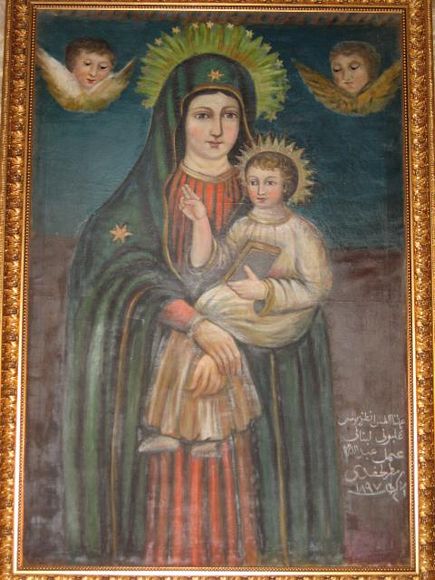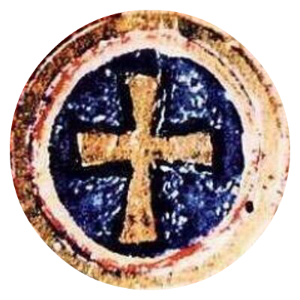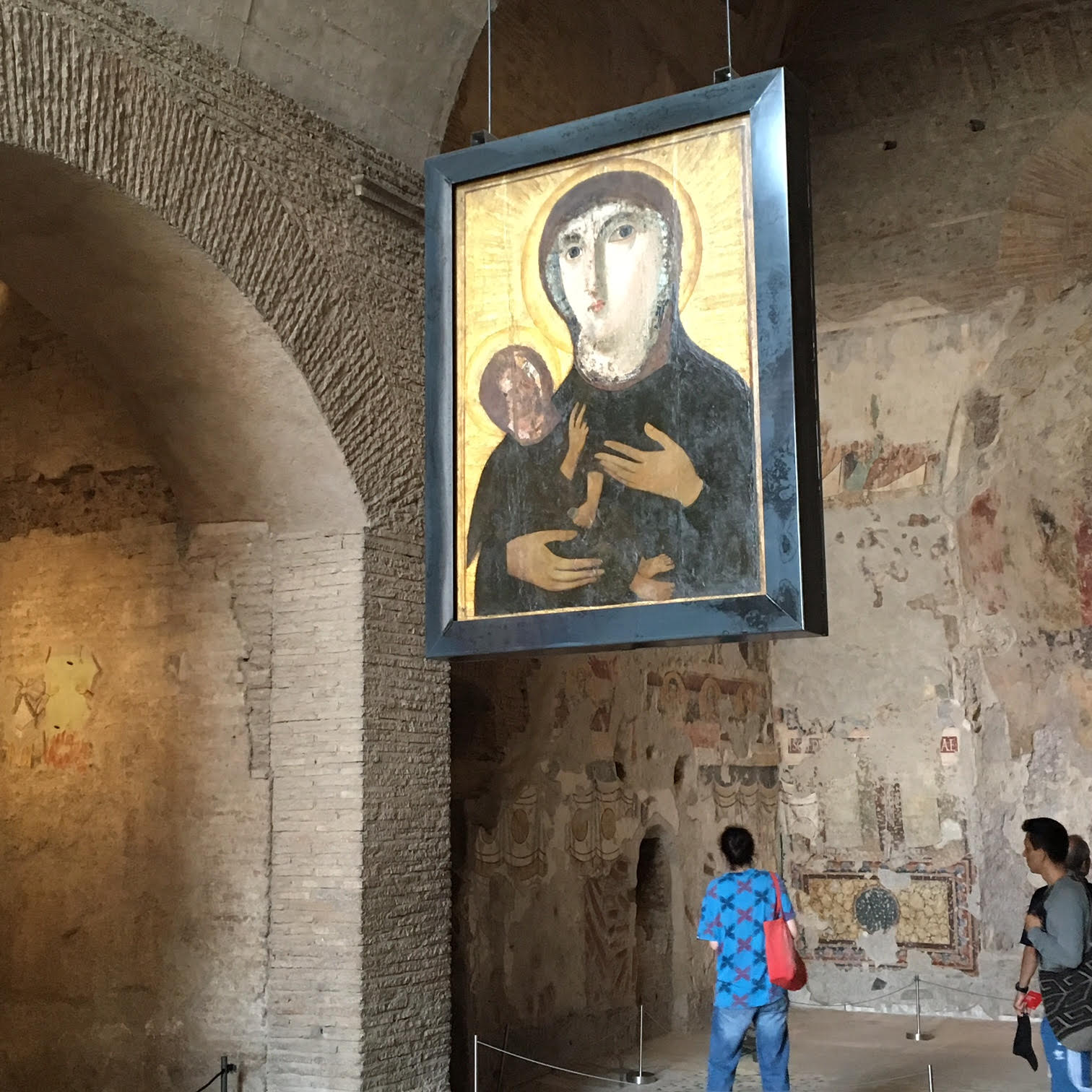Our Lady of Elige

The image pictured here on the left (bottom is you are viewing this website on a smart phone) is of Our Lady of Ilige (il-eej), also known as Our Lady of the Maronites and also the Patriarchal icon. I am told that starting in the last 15-20 years, our Maronite Churches began displaying replicas of this icon in their sanctuaries. Why? Where did it come from?
When I was a seminarian, I was taken to a church in Lebanon, near the hometown of one of my friends who is now a priest (Abouna George Hajj). The Church of Our Lady of Ilige is located in the village of Mayfouq in the district of Jbeil. It was built at the site of a former pagan temple, and parts of that structure are still visible in the Church building. The word Ilige is derived from the name of the temple which was to honor a pre-Christian era pagan god. It is claimed that Christians made the site a Church back in Apostolic times, dedicating it to the Mother of God as Our Lady of Ilige. From the the 12th to the mid- 15th century this Church was the refuge, shelter and sometimes home of the Maronite patriarchs, priests, and bishops who lived with the Patriarch. At times they would come under attack by enemies of the Church, and this church, with its hidden compartments found in the walls of the church building and hidden room above the chapel, provided sanctuary.
The original icon (or painting, if you will) of Our Lady of Ilige was actually buried under many, many layers of paint (the image on the left is a replica of the “painted over” image — the one on the right *bottom for smart phone viewers* is the restored, original icon). It is believed that attempts to “improve”, or adjust the icon over the centuries, resulted in part, from subtle Latinizations as the Maronites encountered European Christians who passed through as part of the Crusades. As a result, the icon was hidden for centuries, only to be discovered in the restoration undertaken in the 1980’s. To the surprise of the Carmelite nuns assigned to the restoration, layer after layer was uncovered to reveal the original — an icon of authentic Syriac Maronite religious art dating to the 10th century. As layers were added, the icon became less Lebanese/Middle Eastern, and more European. This makes sense because, as already mentioned, the Maronites were encountering and being influenced by the Roman Catholics from the time of the Crusades forward, who were basically European.
This restoration by Carmelite nuns brought this ancient example of Maronite Madonna and Child to our attention. It is for this reason it began to be displayed in our churches. It is new to us, but one of our oldest preserved icons which belonged to the Patriarchs who lived as almost monks in caves and churches like the one at Mayfouq. It is a treasure that tells a unique tale, one of the Maronites, and of Lebanon. As a Westerner, I am so used to seeing this type of image with Mary and the child Christ depicted as European — in facial features and in clothing. However, that day in the Batroun district in Lebanon with my friend and future brother priest, I had the most beautiful realization — Mary was from the Middle East, from the Holy Land, so she must have looked like women from that area. I said to my friend Abouna George who had brought me to see the ancient church, “she looks like OUR women.” He smiled in that excited way he sometimes smiles, and pointed out what I said. He thought a minute and said something like “Aino, you are Maronite not just according to canon law, but according to your heart — you are one of us!” To this day this authentic and unique image and my memory of the trip fill me with pride and joy. To read more about this authentic truly Lebanese, but also truly Maronite icon, click here.
–Abouna Christopher

